The small town of Sarasota stands on the southwest coast of Florida. There are three Orthodox communities in the town and its surroundings, namely those of the Patriarchate of Constantinople, the ROCOR, and the OCA.
The ROCOR parish of St. Joseph the Betrothed follows the form of worship called the Western Rite, as it was before the Great Schism of 1054 in the One, Catholic and Apostolic Church. It is located in a plain commercial building with ordinary offices. I ascended to the first floor and saw the vestry on my left. At first glance you understand that the vestments that are kept here are very different from those we see on our clergy in Orthodox churches, although there are some Byzantine-style vestments here. Metropolitan Hilarion of Eastern America and New York, the First Hierarch of the ROCOR, was to come here without any subdeacons or assistants, put on his liturgical vestments, and proceed to a larger room opposite, which is used as the church. Greek and Russian Orthodox icons are seen at the very entrance to the room. There are neatly wrapped vestments on the chair. Metropolitan Hilarion was going to ordain clergy for Western Rite parishes in the USA and Sweden here for the next few days. The faithful were able not only to see the ordinations but also to attend the form of Divine Liturgy that existed some centuries ago when the Roman bishops were still in communion with the rest of the Orthodox Church.
These rooms are rented for the parish by its rector, Archpriest Mark Rowe, Dean of the ROCOR Western Rite Stavropegic Parishes.
“My parishioners prayed together with Serbs”
“This is the second place where our parish has served since 2012, when I converted to Orthodoxy from Anglicanism. I embraced Orthodoxy together with a priest with whom I had served for fifteen years, along with a small group of our parishioners,” Fr. Mark relates. “With the blessing of Metropolitan Hilarion we asked a local Methodist church’s permission to serve in their premises. But soon the Methodists closed the church. The question arose: Where should I serve next? At the same time, a post for the parish priest at St. Sava’s Serbian Orthodox Church in North Port, south Sarasota, became vacant. The Serbian Bishop Mitrofan blessed me to serve there, and I took my parish with me. There were just fifteen parishioners by the time of my arrival, and four years later their number reached over 100.
“My parishioners from St. Joseph’s Church came and prayed together with the Serbs, and learned Eastern Orthodox services. They liked the services of both the Eastern and the Western Rites, particularly joint Lenten services that still gather the clergy and laity of Russian, Greek, and Serbian parishes from Tampa, Fort Myers, and Sarasota.
“However, last year a priest from Serbia came to the church, so I started looking for a new home for our Western Rite community. True, the two rooms that we have been renting in the commercial building are not a church building; but at least we can plan our future here. We have furnished and equipped our little Orthodox church. It is here that we celebrate the Liturgy according to both the Eastern and the Western Rites; it is here that Metropolitan Hilarion has ordained over twenty of our clergy within a short span of time; and it is to these premises that we brought the Holy Fire from Jerusalem that had been delivered to New York City this year.”
Western Rite Orthodoxy is a form of worship that is practiced by canonical Orthodox communities and groups. It comprises modified forms of historical Western liturgical rites. It has existed since the mid-twentieth century in “Western” communities of the ROCOR and the Antiochian Archdiocese of North America.
Before the Great Schism of 1054 the One, Catholic and Apostolic Church had practiced a wide variety of liturgical forms. After the Schism, the Eastern, Greek Church stopped using the Western liturgies.
The modern revival of Western liturgical practice began with the activities of the German Catholic Priest, Julius Joseph Overbeck, who was converted to Orthodoxy in 1865 and was received as a layman by the Russian Embassy’s priest, Evgeny Popov.
On June 16, 1936, in response to a request by the group led by Louis-Charles Winnaert to the Patriarchate of Moscow, the Locum Tenens Metropolitan Sergius (Stragorodsky) issued a decree entrusting those desiring to embrace Orthodoxy while maintaining their Western liturgical rites to the pastoral care of Metropolitan Eleutherius (Bogoyavlensky) of Vilnius, who was in charge of the parishes of the Moscow Patriarchate in Western Europe. The group was received with the name “l’Église Orthodoxe Occidentale”—that is, “the Western Orthodox Church”, and soon was transferred to the jurisdiction of Bishop John Nectarius (Jean-Nectaire) of Saint-Denis (born Evgraf Kovalevsky) with the name, “the Orthodox Church of France”.
From 1959 until 1966, Kovalevsky and his community were under the ROCOR jurisdiction where in 1964 he was consecrated a bishop. At that time the “Orthodox Church of France” was supported by Holy Hierarch John (Maximovitch) of Shanghai and San Francisco. His death in 1966 became a hard blow to the Western Rite movement.
In May 1958, Patriarch Alexander III of Antioch blessed Metropolitan Anthony (Bashir) to found Western Rite parishes in the USA, which he did in August 1958. In 1977, an Episcopalian parish in Detroit joined the Antiochian Western Rite Vicariate. This parish was the first to use the rite based on the Anglican one that had been earlier approved by the Commission set up by Holy Patriarch Tikhon (Belavin) of Moscow in 1904, when he served in America. This rite is often called “the Liturgy of St. Tikhon” after him. This Liturgy is used by most of the Antiochian Vicariate’s parishes and the ROCOR.
Fr. Mark served in the Episcopalian Church for sixteen years and eventually became assistant bishop of one large diocese. He waited for thirteen years until he could be received into Orthodoxy together with his parishioners. But he did not spend those years in vain. He gained wide experience in communication with the clergy in the Antiochian Church in America and made many new friends with whom he has worked together ever since.
“To tell the truth, the Russian Orthodox Church, Russian spirituality, and the Russian concept of podvig [spiritual labor, exploit] are to my taste. I celebrate the Liturgies of both rites and find beauty in both of them,” Fr. Mark shares his impressions.
Before this parish started using the Western Rite services in this church, its parishes had travelled to worship with the Serbs, where Fr. Mark had served with the blessing of a Serbian hierarch.
“There is no state Church in America. And there are so many churches and groups of various jurisdictions here that sometimes they resemble ethnic clubs rather than churches,” Fr. Mark goes on. “Unfortunately, we can see discrimination in a number of such ethnic parishes, which seems natural to them. I first celebrated in English at St. Sava’s Church, then I learned Church Slavonic and Serbian and that enabled me to serve God more fully and to be closer to Serbian parishioners. While I was happy, my family spent four years in a church where they felt like outsiders. At least this is how they felt there. Though they couldn’t understand a single word; they knew that there was the grace of God there, they sensed it and in time came to love Serbian services.”
The USA is a country of immigrants, and parish “hobby clubs” may seem natural. Both the clergy (who come here) and the newly-arrived immigrants note this. Yet the majority of spiritually oriented priests above all strive to gather their flock around the communion chalice of the Liturgy.
“Many people in the West seek spiritual refuge in the Orthodox Church,” Metropolitan Hilarion relates. “For those who have a difficulty comprehending the Byzantine Rite there are two more alternatives: they can attend Western Rite services at the parishes of the Antiochian jurisdiction or those of the Russian Orthodox Church Outside of Russia. Our priests (unlike those of the Western Rite jurisdiction of the Patriarchate of Antioch) are entitled and have a blessing to serve in Orthodox churches of the Eastern Rite as well.”
On November 13, 2008, by the decision of the Holy Synod of ROCOR, all the Western Rite parishes of the ROCOR became directly subordinate to its First Hierarch Metropolitan Hilarion. As of mid-2010, the Russian Orthodox Church Outside of Russia had nine communities using the restored Roman Rite that had been practiced in Christian public worship in England until the sixteenth century and considerably influenced the Anglican liturgies. Since 2011, the ROCOR has had the Western Rite Vicariate that consists of twenty-eight parishes in the USA, one parish in Canada, one in the UK, and two in Sweden.
The clergy serving in the Western Rite parishes of the ROCOR jurisdiction are former clerics of the Anglican and Protestant Churches.
“The Protestant Church itself has become the world”
Fr. Seraphim Byrd became an Orthodox priest in Bright Week of 2018. Two months earlier, in February, Metropolitan Hilarion had ordained him a deacon at St. Nicholas Monastery in Fort Myers, Florida.
“I obtained a theological education at a Baptist seminary,” Fr. Seraphim relates. “In my last year at the seminary, before getting a Ph.D in theology, I studied Church history, and it was then that I discovered Orthodoxy. It is an interesting fact that I had never heard about Orthodoxy before then, although America is a country with multiple denominations. And I felt an urge to know more about this religion.
“On completion of the seminary my wife and I were sent as Baptist missionaries to Poland, where I had more opportunities to study Orthodoxy and Catholicism thoroughly. Later we lived in Greece, and then I was sent as a missionary to Cyprus. At the same time, one of my colleagues, Fr. James Early, went to Bosnia to open a Baptist church there. He communicated and worked a lot with Serbs, so he eventually became Orthodox and now he serves as a priest in an Antiochian parish in Texas.
“Another missionary, my subordinate, converted to Orthodoxy while studying at Thessaloniki University in Greece.
“After returning from Europe I worked on my doctoral thesis and served as a Baptist pastor in the city of Memphis, Tennessee. My thesis was dedicated to missionary work and the intersection of cultures. I was studying ecclesiastical history and reading Orthodox literature. One day I approached Fr. Mark Sutton, an OCA priest who served at St. George’s Church in our city, and asked for a meeting. Fr. Mark replied that he worked six days a week at his secular job and barely had any free time. But he suggested that I attend the matins that he served at 5.30 AM every morning. So I started attending the matins every morning, and after the service Fr. Mark would teach me how to pray and answer all of my questions.”
Three years passed. Fr. Seraphim had served as a Baptist pastor for twenty years by that time, yet every morning he would travel to the Orthodox church for the service. He learned a lot and asked numerous questions.
“We would have ten to twenty minutes after the matins,” Fr. Seraphim continues. “Fr. Mark taught me many things. Love for the Orthodox faith kept growing in my heart, and I prayed to the Holy Theotokos, asking Her to lead me to Orthodoxy by ways known to Her alone.”
“What was lacking in the Protestant Church?” I ask.
“Though people loved Christ in the Church where I served, I was concerned that the Baptist Church lacked some distinctive culture.
“Whenever you enter an Orthodox church, even a small Orthodox chapel, you immediately realize that you’ve entered the Heavenly Kingdom. However, when you come to a Baptist church you can hardly understand where you are—it can be a cowboy’s church, an assembly of bikers, a (dying) traditional church, a church of modern tradition, etc… I would ask myself: ‘Where is the Church? Where is the culture that is greater than our entire world?’ And I would answer myself that our Church itself has become the world together with us. We ‘wallow’ in worldliness. Although people pray here, they don’t have the fullness that I have seen in the Orthodox Church and which is mentioned in the Holy Scriptures. And during the morning services that I attended daily I cultivated that ‘taste’ of the Heavenly Kingdom in myself. This had gone so deep into my soul that I couldn’t remain a Baptist any more. And I resolved to join the Orthodox Church through Chrismation.”
When the future Fr. Seraphim said to his mentor that he wanted to be a catechumen, Fr. Mark answered him that he had already been a convert for three years, albeit unofficially. Fr. Mark saw the intentions of his heart and knew his family very well.
“I told my wife that I was going to leave the Baptist Church. Initially she had doubts, but two weeks after I had left the Baptists, namely in October 2006, we both were received into Orthodoxy.
“Early one morning (after the Chrismation) the Lord ‘woke’ my wife, and she shared all her concerns with Him,” Fr. Seraphim continues his story. “According to her, she started asking Him questions, and the Lord explained every detail to her and ‘put everything right’. And her fears were cleared up at that very moment, and her heart was filled with peace. She loves the Church and church services, and we are happy to be a part of the Orthodox Church.
“Our son had become Orthodox earlier than we did, at the age of twenty-four. Then our elder daughter was Chrismated too. And my younger daughter with her husband became members of the Church on Palm Sunday this year.”
“And why did you choose the Western Rite as the form of worship?” I ask.
“It was by coincidence. I was nurtured in the Eastern, or Byzantine Rite, of the Orthodox Church, and my family and I were received into Orthodoxy at an OCA parish. But the nearest Byzantine Rite Orthodox parish to Mountain Home, Arkansas (the town we live in), is 100 miles away. There is a Western Rite Orthodox parish nearby; so I started to attend it, though I love the Byzantine tradition and Russian culture. I stayed in the Russian city of Vladivostok when I learned Russian.
“Our St. Thomas Church is the only Orthodox church in the northern central part of Arkansas. This very beautiful church is built of stone and wood. We have a parish hall on the adjacent territory where our parishioners can refresh themselves after services. This year Metropolitan Hilarion ordained two priests and one deacon for this church.
“The population of our town is 50,000 inhabitants. Its citizens usually go to church on Sunday morning. My wife works ten miles away from our church. One day we counted and found that there are seventeen churches between our house and her work. Baptist, Evangelical churches can be found at every step. Many of their members feel a lack of the genuine faith and Church culture in them, therefore people choose Orthodoxy.
“My wife’s ancestors came from Poland, and she still speaks Polish with her relatives. My family has British, Irish and Scottish origins. Alas, all the beautiful pre-schism liturgical traditions were lost in Britain. I am glad that through the Western Rite we get to know the faith of our forebears and partly use the ancient Church traditions in our services. It is easier for Anglicans and Protestants seeking Orthodoxy to understand the Western Rite, and I believe the Western Rite will have a great future in America.”
“We were urged to serve in Ukrainian”
Until recently there were two Western Rite parishes outside the USA, namely one in Canada and one in the UK. Now two more parishes have appeared in Sweden. Four clerics were ordained for them in Sarasota during the Paschal season.
Hieromonk Seraphim (Furemalm) served as a Lutheran priest in Stockholm for fifteen years, yet he was always drawn to the Orthodox Church. In his youth he spent five years in Cyprus, knew many Orthodox bishops and priests from the Greek Church, and felt that he would eventually become Orthodox.
However, the Greek metropolitan in Stockholm was of another opinion. He said: “You need to be a Greek to become a true Orthodox! And the Swedish should remain Lutherans.”
“Through one deacon I got into contact with the Polish Old Catholic Church in the USA and Canada, which opened its deanery in Norway and Sweden and promised to join the Orthodox Church,” Fr. Seraphim relates. “However, the Poles didn’t keep their word. As a result two parishes in Norway and one parish in Sweden joined the Patriarchate of Constantinople and the Patriarchate of Moscow, while we made contact with the schismatic ‘Kyiv Patriarchate’ through our ignorance.”
In December 2015, the parishes in Sweden joined the “Kyiv Patriarchate”, formed the Deanery of North Scandinavia, and planned to establish the “Scandinavian Orthodox Church” under the omophorion of “the Kyiv Patriarchate” bishop. It was decided to hold two Eastern Rite services and two Western Rite services monthly in the deanery’s parishes.
“However, year by year we were under increasing pressure from Kiev,” Fr. Seraphim continues. “As time went by, the parish was becoming more ‘Ukrainian’—most of our parishioners were Ukrainians who had come to work in Sweden. But we naturally wanted to organize the Church for Orthodox Swedes! To top it all off, we were forbidden to use the Western Rite and were encouraged to use only the Byzantine Rite and to serve in Ukrainian… But our Swedish parishioners don’t speak Ukrainian, so some of them defected to the Anglicans and some to the Catholics. We refused to worship in Ukrainian and as a result were forbidden to perform any services.”
Fr. Seraphim got in touch with Fr. Mark Rowe, and the Swedish clerics decided that only the ROCOR could help them organize the parishes in accordance with the canons. In late 2017 they finally appealed to Metropolitan Hilarion.
“Now we are a part of the Russian Orthodox Church Outside of Russia, namely a stavropegic deanery in Sweden. We are going to serve in Swedish, and cooperate and maintain fraternal relations with the parishes in the USA and Germany. We have two parishes: the community of the Holy Protection in Stockholm and the community of St. Nicholas and St. Hallvard Vebjørnsson (an ancient Scandinavian saint) in Göteborg.”
“What are the main tasks you set before yourselves?” I ask.
“When the Orthodox Church comes to a foreign country, its main goals are the provision of all the necessary facilities to the church and translation of the services, liturgical and Church books into the local language,” Hieromonk Lazarus (Wilhelmsson), rector of the parish in Göteborg, says. “Before becoming Orthodox, the Norwegians, Swedes and Danes should first become part of another culture, as it were. They begin to attend Serbian, Greek, and Russian churches. They go there and understand nothing. Although they are very welcome there, they still don’t feel at home in these parishes as they don’t speak the foreign language. Today we have an opportunity to establish a Swedish Orthodox mission. And it is important to us to serve in accordance with our Scandinavian traditions, in our mother tongue, so that people can feel protected and at ease.”
As is the custom in foreign parishes, the two Swedish deacons and two priests who were ordained at St. Joseph’s Church in Sarasota have secular jobs. The clergymen of Swedish descent are extraordinary people. For instance, Deacon Andreas Eraybar from Göteborg is a linguist by trade, and in his free time he searches for Swedish artefacts and antiques that were once taken away from Sweden and ensures that they are returned to their home country.
“Our churches are not financed by the state, so we pay our rents and public services ourselves,” Fr. Lazarus relates. “There is a café attached to the church that we rent in Stockholm (it is a big Protestant church seating 200 people), and on Saturdays Fr. Seraphim (a senior officer of the finance police) and Deacon Michael Catenacci (who has a degree in psychology; he is a staff manager, and a retired Air Force Captain) work at this cafe.
“In Göteborg we rent a small building of a Catholic church jointly with a parish of the Korean Church, and we pay our rent together with Deacon Andreas Eraybar. We have sufficient space in these premises for the next two years. As our parish grows we will look for funding opportunities to build our own church, and hope to construct it in five years.
“More Christians of other denominations are attracted to Orthodoxy in Sweden. There are currently thirty parishioners in Stockholm and ten parishioners in Göteborg (this parish was founded in July 2017). Our services have resumed since we were granted canonical status, and now we can attract more people who take a keen interest in the Orthodox faith.”
“The Holy Equal-to-the-Apostles Prince Vladimir of Kiev, his grandmother Princess Olga, and the Right-Believing Prince Yaroslav the Wise were of Scandinavian origin,” Fr. Seraphim says. “For centuries nobody prayed to our Scandinavian saints. Emigrants would come to us, bring the veneration of their saints with them and pray to them. It is not without reason that St. John (Maximovitch), Archbishop of Shanghai and San Francisco, used to say: ‘Nothing good can happen in Western Europe as long as you don’t pray to its saints’. And praying to these local saints is our chief mission.”
Such are the Orthodox priests from the USA, Sweden, the UK, and Germany, who for Christ’s sake serve in the Western Rite for their brothers and sisters who are willing to absorb the depths of Orthodoxy but are still unprepared to accept and understand the Byzantine Rite, which is so familiar and clear to us.
“We accept Western Rite services as a missionary tool, in conformity with the decision of the Most Holy Governing Synod, made long before the Revolution,” Metropolitan Hilarion comments. “In those remote times, there were people who wished to become Orthodox faithful and at the same time to continue using their Roman (Western) Rite.
“We also had to remove some elements that had been introduced by Catholics. Thus, Western Rite parishes use leavened bread rather than unleavened bread for Holy Communion. The Epiclesis (which was missing in the original form) was added as well. All the deficiencies were remedied to present the Western Rite in its purest liturgical form. All of our Western Rite parishes observe the old calendar. Our Church is open for all people of all ethnic groups, whether they be Americans, African-Americans, or Europeans. I pray that people who join our Church through the Orthodox Church’s Western Rite may achieve spiritual heights through prayer, be stronger in their faith, and acquire the spiritual treasures that the Orthodox Church has accumulated over 2,000 years.”

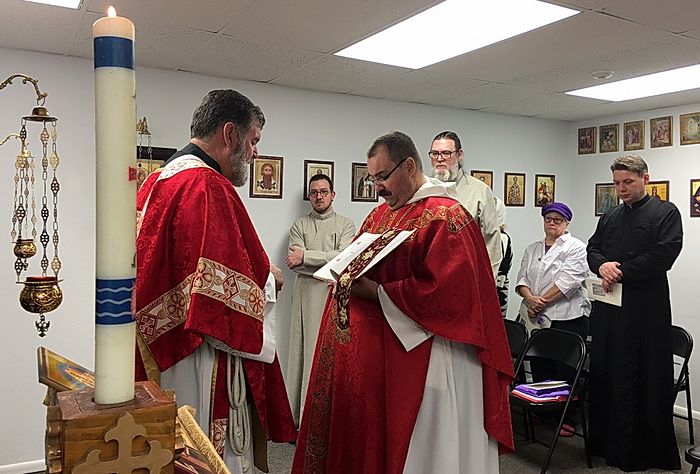
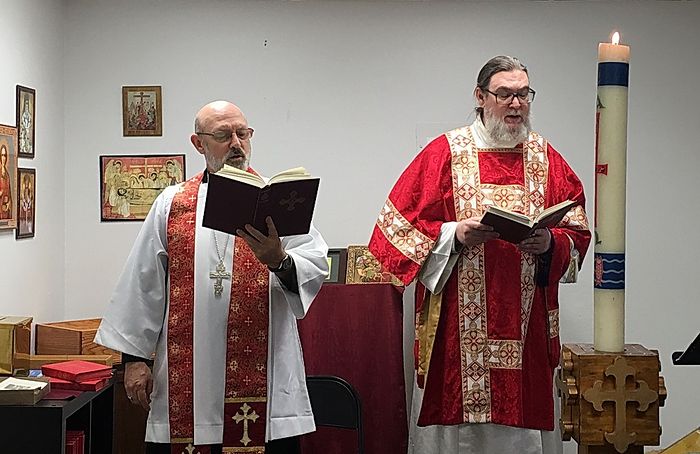
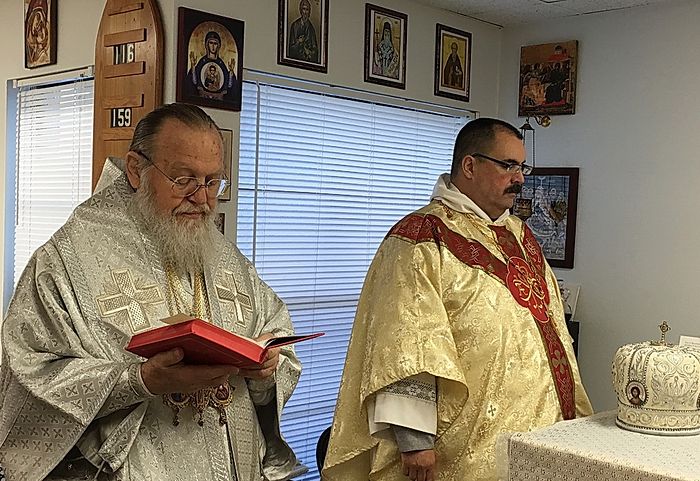
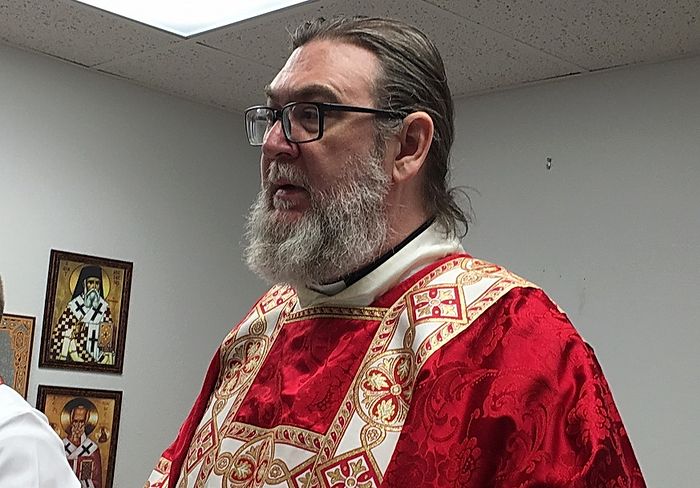
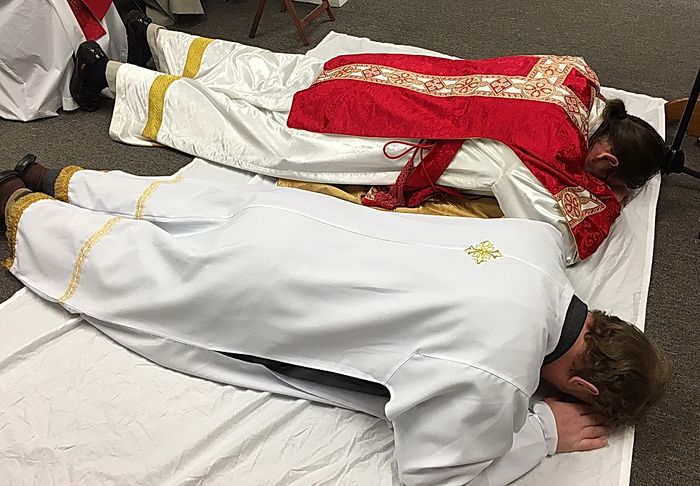
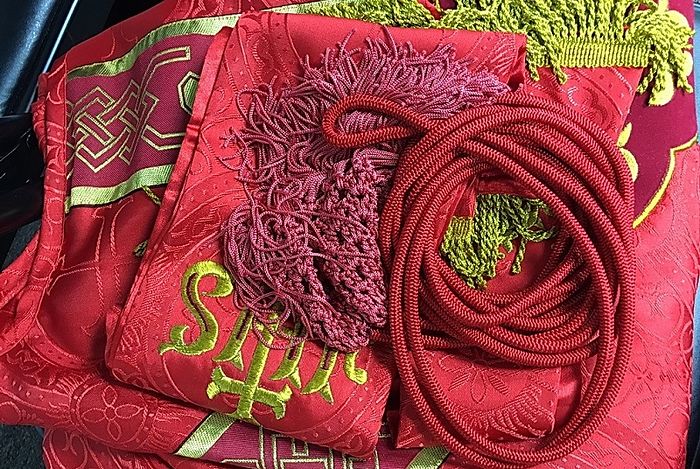
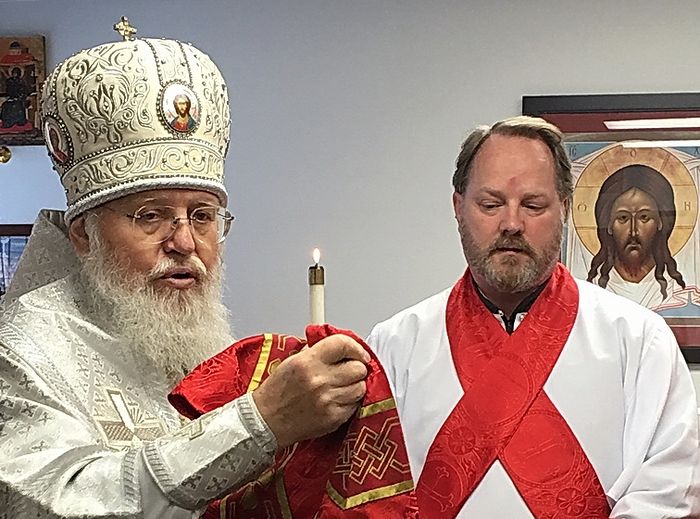
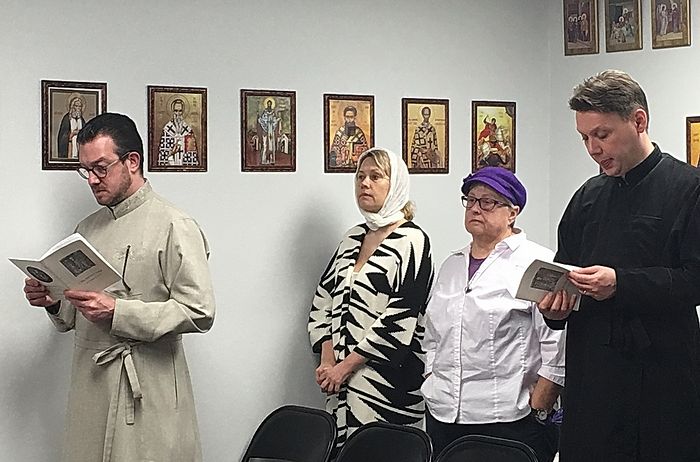
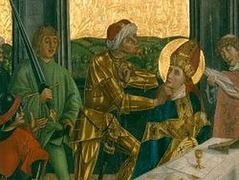
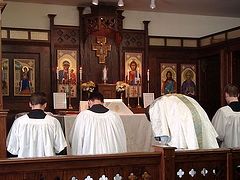
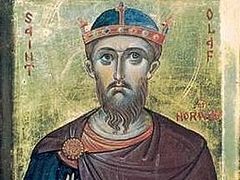
The African Orthodox Church.